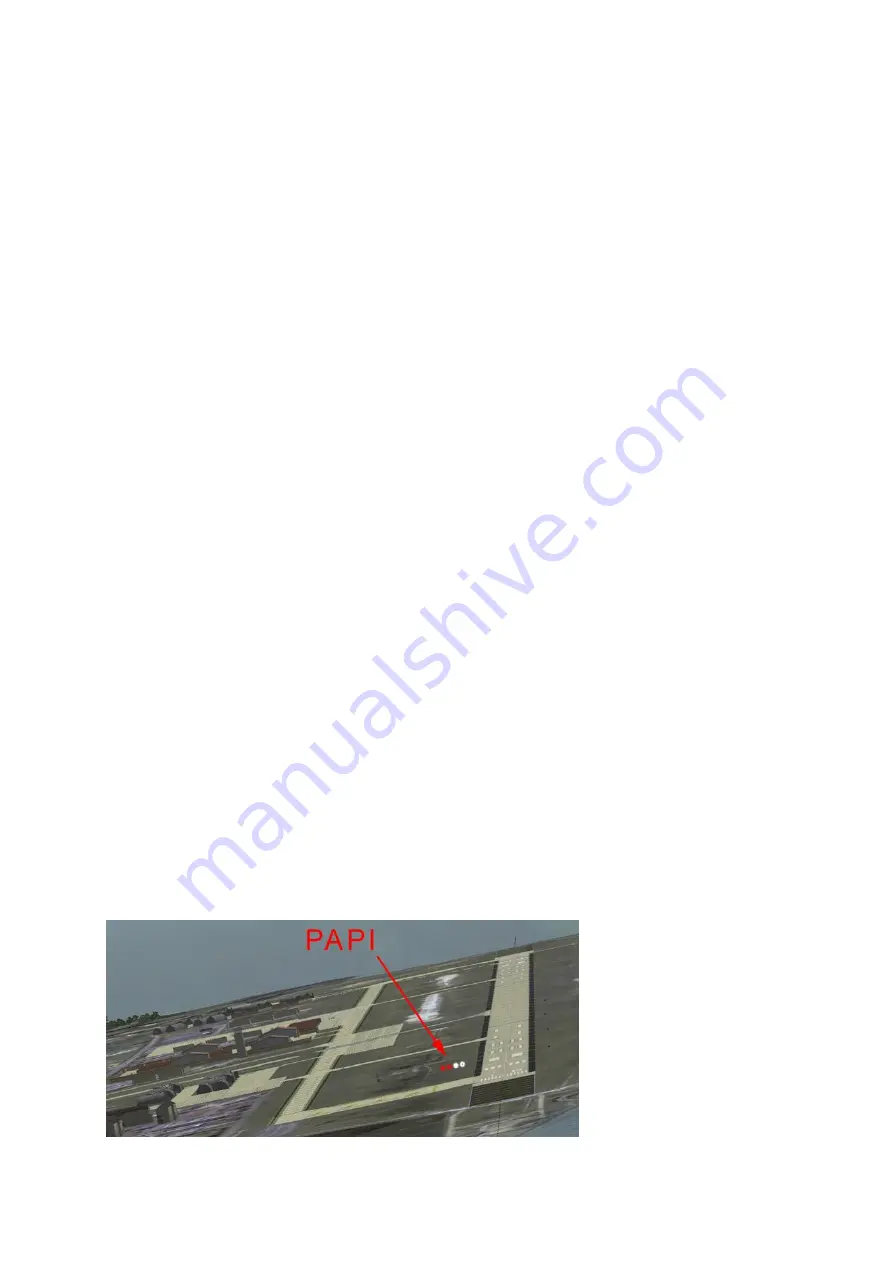
T.O. BMS1F-16CM-1
BMS 4.34 Change 2.00
BMS 4.34 Dash 1
© Red Dog 2012-2019
Page: 182
2.3. LANDING
Landing the F-16 is fairly easy; the aircraft is stable from a pilot
’s point of view. This chapter will go
through a straight-in visual landing but the final approach steps are relevant to any type of landing.
In BMS the F-16 is able to land on any in theatre runway; airstrips included. Generic airbases always
have the same length runways and only specific airbases have longer runways as in real life, i.e.
Kunsan, Kimpo, Osan & Seoul in KTO. BMS does not take into account the runway conditions.
Airstrips are considered short field landing.
Besides the runway length another aspect to be taken into account before landing is the weather.
Visibility and winds are implemented. Crosswind landings with limited visibility may therefore happen
but that is outside the scope of this chapter and is detailed in the BMS-Comms-Nav-book document.
That being said, wind must always be checked before landing. This can be done with DCS right (SEQ)
while displaying the CNI UFC page.
Landings should usually be performed with the DRIFT switch in NORM; this allows the pilot to visually
see the effect of the wind through the offset of the HUD flight path marker. Plan to touch down on the
upwind side of the runway (the side opposite the FPM) in high crosswinds.
A straight-in landing is a long, controlled descent to the runway; usually beginning at a distance
between six to nine nautical miles. The landing phase will start aligned with the runway axis; you can
use the airbase TACAN to do that but it can be done visually as well. Altitude should be 2000 feet and
airspeed less than 300 knots for safe extension of the landing gear. Due to the low drag nature of the
F-16 speedbrakes may need to be opened to reduce speed.
From this point on we will no longer refer to airspeed but instead to angle of attack (AOA). The optimal
approach airspeed depends on your gross weight and the best way to be ‘on speed’ is to forget all
about airspeed and think 13° AOA for landing.
First lower your landing gear. Doing so will automatically deploy leading and trailing edge flaps, and
the FLCS will switch to Takeoff and Landing Gains. The drag induced by dirtying up your aircraft
configuration will decrease your airspeed further and pitch the nose down a little.
The HUD symbology will also change; an AOA bracket will be displayed. This symbol is used in
conjunction with the FPM and the Indexer lights as your main cues for controlling the approach.
The glide slope is 3° down to the runway, with a -2.5° dashed line on the HUD. By placing the FPM on
the -2.5° dashed line, or slightly below, you should fly a correct profile for your descent to the runway.
Most runways in BMS are equipped with a visual landing aid system known as Precision Approach
Path Indicator or PAPI. It consists of four equally spaced lights situated to the side of the runway.
The lights will be seen as white or red according to the position of the aircraft with respect to the
optimal glideslope. The more red lights visible from the aircraft the lower you are below glideslope.
The more white lights seen
the higher you are above the
glideslope.
A 13° AOA approach is flown
correctly when two white and
two red lights can be seen.
An 11° AOA approach will
show “three red, one white”.
A simple rule of thumb to
remember: Red is dead!
Summary of Contents for F-16C/D 4.34
Page 30: ...T O BMS1F 16CM 1 BMS 4 34 Change 2 00 BMS 4 34 Dash 1 Red Dog 2012 2019 Page 30 ...
Page 56: ...T O BMS1F 16CM 1 BMS 4 34 Change 2 00 BMS 4 34 Dash 1 Red Dog 2012 2019 Page 56 ...
Page 121: ...T O BMS1F 16CM 1 BMS 4 34 Change 2 00 BMS 4 34 Dash 1 Red Dog 2012 2019 Page 121 ...
Page 134: ...T O BMS1F 16CM 1 BMS 4 34 Change 2 00 BMS 4 34 Dash 1 Red Dog 2012 2019 Page 134 ...
Page 176: ...T O BMS1F 16CM 1 BMS 4 34 Change 2 00 BMS 4 34 Dash 1 Red Dog 2012 2019 Page 176 ...
















































